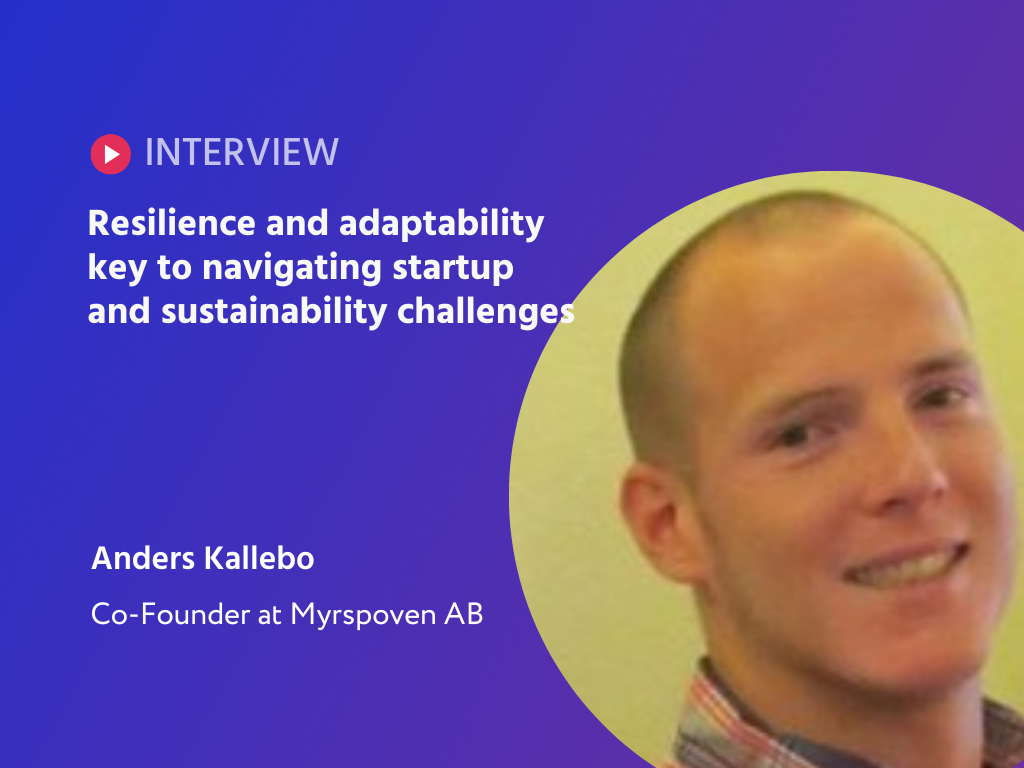Today, developing a website is a common service any company can afford. For quite a modest price, you’ll get a beautiful and functional landing page or business site. However, when it comes to more complex projects, telling the exact web app development price becomes problematic.
How much does it cost to make a web app? Web application development is a complex process with a lot of constituent parts. Functionality, complexity, and the number of connected third-party services all play their role in determining the final price. Searching this question in Google, you will encounter a wide variety of offers, with various resources estimating web application development at $5,000–50,000.
So, is there an unambiguous answer to the question, “How much does a web application cost?” Yes, and today, we are going to speak it out loud. Read on to find out what factors affect the cost of web application development, how you can reduce these costs, and how to find those who will bring ideas to life.
Why Do You Need to Develop a Web Application?
The best reason to develop a web application is, of course, to take your business online and make money. Today, people are expecting fast and convenient services from the brands they interact with. The popularity of web applications is only growing every year, and statistics confirm this. According to Emergen Research, the size of this market is expected to reach $10.44 billion by 2027. The primary audience of such applications is mobile device users.
There are several reasons why this type of software is an optimal choice for business:
- Space saving, as web applications take relatively little memory on the user’s device;
- They are easy to develop, and the mobile app’s functionality can be as good as their desktop counterparts;
- Web applications utilize all the advantages of both desktop and mobile devices, such as notifications, fast loading, etc.;
- The conversion rate of such applications is high;
- They synergize well with the latest technology trends, such as VR, AR, and IoT.
After developing a web application, you will get a cross-platform product that is ready to use and scale. It doesn’t even matter what size your company is, as most web apps are made by small and medium-sized enterprises (SMEs).
Stages of Creating a Web Application
Talking about the web application development cost, we should first review the stages of this process, as they have a huge impact on the final price. Every serious product goes through the phases listed below. You can carry out the preparatory stages yourself, but it is better to find competent specialists for idea formation and beyond.
1. Idea formation
Before developing a web application, you need to clearly understand what your product will do, what it will be like, and how you are going to monetize it. This can be done with a consultant or by yourself if you already have a clear business vision.
2. Market research
Market research determines who is the target audience of the web application, how exactly it will solve their problems, what value it will bring, and what should be included in the tech stack of the project (programming languages, frameworks, plugins, integrations). It is also necessary to define how the client will receive the service and how it will be scaled. For these tasks, you’ll need some assistance from a business analyst.
3. Drafting requirements
When the preparatory stages are complete, you can move on to writing project requirements based on what features you need for the product. In addition, at this stage, you select the architecture of the future web software.
4. Design
Here, the user experience (UX), interface (UI), and appearance of the service are reviewed and defined. The application must look and feel great because this is the only way it can attract and retain an audience.
5. Development
It’s time for developers to write the code. In order to make the service functional on all devices, front-end developers do adaptive layouts and generally use the code to bring the created design to life. Back-end developers set up client-server interaction and business logic on your side.
6. Testing
To ensure that the client doesn’t get a shoddily working product, you should run it through manual and automated tests to identify bugs. This stage of web application development can take place simultaneously with the previous one.
7. Post-release support and maintenance
After the application is tested and fully functional, everything starts over again. It is necessary to monitor its results, look for ways to refine or improve the product, as well as to scale.Complex web apps usually undergo all these stages and are created from scratch using a minimum of off-the-shelf parts. As a rule, the more complex a technological solution is, the larger the budget it will require. But what specific factors influence the average cost of web application development?
What Factors Affect Web App Development Cost?
Surprisingly, it’s not just about coding but a blend of choices and partnerships. Let’s find out what aspects have the most impact on the final price.
1. Type of application
The custom web application development cost is highly dependent on the scale and complexity of the app. Complex applications are more expensive, but their functionality is also more comprehensive.
SPA
This category usually includes either purely informational resources or applications that solve one simple task. Development of such services is relatively fast and requires minimal resources. Web applications of this type include:
- Calendars;
- E-mail services;
- Cloud storage.
MPA
These applications consist of several pages and can have different functionality. Such applications include various online marketplaces and e-commerce sites, e.g.
- Aliexpress;
- Amazon;
- Ebay.
PWA
These apps combine a variety of different features that native and web apps have to offer. The development of such platforms can take quite a long time and require significant resources, but the result is often worth it. Examples of progressive web applications are:
- Spotify;
- Pinterest.
2. Technology Partner Region
One of the key factors influencing the cost of development is the region where you will be hiring. You can, of course, build an in-house team, but it is a time-consuming and expensive task. Typically, you can turn to offshore or nearshore specialists and get an excellent product for less.
Sometimes, the difference between regions is so significant, that with the right choice you can save more than half of your budget. A process that would cost about $150 per hour in the US can cost $60 in Eastern Europe. At the same time, the quality of code and the level of service will be absolutely identical.
3. Cooperation model
Another key factor is the cooperation model you go for. The choice, as always, depends on your needs, but mind that some approaches can require more resources than others.
Team expansion
If you have already assembled the necessary specialists but lack expertise, you outsource only a few specialists. This engagement model doesn’t require much spending but is only suitable if you already have most processes covered.
Dedicated team
Alternatively, you can hire a dedicated team to implement some parts of the project. This development approach is often used when business owners decide to do analytics, design, or other stages of web application development themselves, and only need developers and testers.
Fully custom development
This partnership model is best applied when you want to develop a complex project from scratch and don’t have the experience in the field. In this case, you get a fully staffed team from your technology partner and full support from idea generation to post-release adjustments.
4. Complexity of UI/UX design
When developing a web application, it’s crucial to dive deep into user experience (UX) analysis, UX/UI design, and front-end development. Remember, real people will be using your service. The more focused the problem your app aims to solve, the more you need to tailor the interface specifically for your target audience. This specialization can easily require larger UI/UX investments. On the other hand, the multi-purpose apps create their own UX/UI challenges.
5. Back-end tasks
The complexity of back-end tasks, such as ensuring data security and managing server infrastructure, can vary greatly. This variation affects the amount of work required, and, consequently, the overall development cost. The more complex the back-end, the higher the price of building a robust, scalable, and secure application.
6. Integration with different services
There’s a great variety of services your app might need to integrate: CRM, SMS, push notifications, payments, etc. This part of the project can become even more expensive when dealing with, for example, your own payment gateway or similarly complex technological solutions. Creating your own tools from scratch strengthens technological independence, but an off-the-shelf solution can be cheaper and more convenient.
7. Lack of boxed solutions
A simple website can be made from a template, and an online store can be based on hundreds of ready-made CMS. But suppose you need a system for managing shipments of petroleum products with unique mechanics customized for your business processes. In that case, you can’t do without some custom development, which tends to be long and expensive.
Are There Any Hidden Costs?
There are typically no hidden web application costs, as you are in control of the process. If you work with a reliable technology partner, everything is transparent and clear. Nevertheless, several steps should be taken into account when you form a budget. These aspects of development can cost as much money as you let them, so you need to be clear about how much you are willing to spend.
1. Discovery stage
You can spend quite some time researching your target audience and forming a vision of the product. In the meantime, the project requires resources. Skipping this stage is a bad idea, but you should define how long you’re willing to wait.
2. Maintenance costs
After creating an application, you need to ensure its operability, fix possible bugs, and promptly respond to user feedback. All this should be taken into account in the initial budget.
3. App security and privacy
The security of your users’ data, money, and information is the cornerstone of your success. This may not be obvious at the start of the development, but implementing protection and ensuring compliance with all the regulations can be time-consuming and expensive.
4. Strategic costs
If your business discovers a winning strategy, it needs to be implemented. However, it may also require additional investments, and you should always prepare for this eventuality.
Average Web App Development Cost Estimation
A web app can be a separate product that is purposefully created for monetization or as a marketing component of an existing business. Below, we detail the web application development cost estimation.
Each type comes with a project estimate of the preparation, design, and development of that particular functionality. Its upper and lower values depend on your specific requirements.
Simple web apps
The simplest web apps can be purely informational or perform one simple function. Sometimes, a web app solves specific tasks, for example, systems to find housing or buy an airplane ticket. As a rule, the development of such applications takes up to one to several months and does not require significant financial investments.
Approximate cost: $5,000–$15,000
Medium web apps
Here, we are talking about more advanced web apps with complex functionality. Marketplaces for e-commerce and applications for small companies fall into this category. Much depends on what functions the final product needs. For example, the essential functionality for an e-commerce application is a shopping cart and order placement. The bare minimum it should be able to do is to store selected items, replenish and remove them, and recalculate the total price. The maximum functionality in this case would be to take into account how the total amount is affected by promo codes and promotions. Even this miniscule additional task requires some effort to implement, meaning you’ll have to pay extra for it.
Approximate cost: $15,000–$60,000.
Complex web apps
Complex applications often have very different sets of functions and aim to solve the most complex tasks. A full-fledged custom application can be a trump card up your sleeve and a sure way to occupy a whole niche in the market. Applications of this type can include CRM, CMS, and other methods of business automation. The cost of such a project can exceed $100,000, but the potential profits may be even higher.
Approximate cost: $60,000–$250,000
To put it simply, the more features you want, the higher the cost to build a web application will be. You can see more details in the table below.
| Simple | Medium | Complex |
|---|---|---|
| Info pages | • Info pages; • User account system; • Admin panel; • Payments; • API & third-party integrations. | • Info pages; • User account system; • Admin panel; • Payments; • API & third-party integrations; • High user load; • Custom statistics. |
| $5,000–$15,000 | $15,000–$60,000 | $60,000–$250,000+ |
How to Reduce the Web App Development Cost?
Sometimes, even at the requirements analysis stage, the amount of work can exceed the budget. This is a frequent occurrence, and there is no need to be timid when the figure exceeds your expectations. On the contrary, if the projected sum appears too small, it is a reason to be wary, as your specialists or partners might misunderstand the scale and complexity of the work ahead.
Nevertheless, sometimes the budget does need to be cut. Ideally, it should be done without losing quality and without increasing the project time. Let’s look at a few ways to achieve this.
MVP development
MVP (minimum viable product) is an app that has minimum features sufficient to attract the first customers. The main task of an MVP is to get user feedback and form hypotheses for further development.
When working on an MVP, the team concentrates on the main functions. Already in the process of working on the project, you can often assess whether it will pay off after release or not. This approach has the following advantages:
- Quick launch of the project with minimal functionality without spending on unnecessary work;
- Testing a hypothesis or idea without significant financial risks;
- Opportunity to adjust the course of further development and correct the shortcomings of the original idea;
- Easier to attract investments.
Proper Discovery stage
Pre-project analytics is a must for any complex application. You need to assess the risks, devise a strategy, and analyze the audience. These efforts allow you to make a more informed decision on what development options suit you best within your budget and vision. If done right, pre-project analytics can reveal the cost of web-based applications you plan to develop.
Use off-the-shelf solutions
For some projects, it is pretty reasonable to choose to base the development process on a ready-made platform or integration of a ready-made tool. In other words, you don’t have to create every function from scratch if there is already an API for it. Using off-the-shelf solutions can reduce the final cost many times over.
Web App Development Cost Estimation at Temy
When developing a web application, you definitely need a reliable tech partner to help bring your idea to life. And that’s exactly what Temy offers. We are a team of professionals focused on making your ideas into reality. We have 9 years of experience on the market, 100+ projects delivered, and 100+ people in the company ready to take on your project.
We have 23+ clients with ongoing projects and 7+ partners that have been collaborating with Temy for 5+ years. Proof of our reliability is the fact that at least 35% of clients come to us via a partner reference rather than advertising. We have created many successful web applications over the years. You can learn all about them in our Case Studies section.
During the development, we provide our clients with cost estimates at different stages of the process. Our specialists can provide you with both educated guesses based on similar projects, and in-depth analytics that take the specifics of your business into consideration.
Preliminary cost estimate
Before we even start working on a project, we can give you a rough idea of the final cost. After creating dozens of various web applications, Temy can determine the approximate price for yours even at the early stages of development. Such estimates can help you form expectations, from which you can then proceed.
Discovery stage rough cost estimate
Once your requirements and market niche have been analyzed, we can provide a more detailed cost estimate. At this stage, we can tell the approximate price of:
- Preparatory work such as writing specifications and preparing databases;
- Estimates of design and development costs;
- Potential ways to reduce the cost with third-party applications;
- Writing technical documentation.
Detailed cost estimate
This stage is conducted together with the developers and is possible during the later stages of the project. After such an analysis, you will get a detailed description of the cost of implementing each specific app feature so you can balance the budget accordingly.
Contact Temy experts now, and we’ll help you calculate the rough cost and timeline of bringing your idea to life.
FAQ
This figure varies greatly depending on the complexity of the project and the region where you hire developers. There are, in fact, some countries with a notably low cost to develop a web application. For instance, a project of medium complexity in Eastern Europe will cost you about $50–70 per hour.
Web app development price and timeframe can vary depending on the essential features, the scale of the project, and the number of specialists involved. On average, web application development takes from 6 months to 2 years.
It depends on the monetization model and the app itself. You can release a specialized product and put an impressive price tag on it, or you can target a mass audience with a SaaS distribution model. Statistically speaking, if your app is in the top 800 in the App Store, you can expect a daily income of $3,500.



